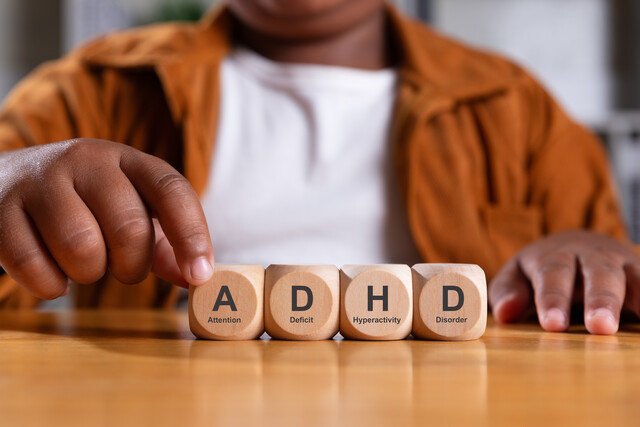It is after the diagnosis that the real work begins � autistic people need help, sometimes a lot of help.
As autism has no single cause, there is no standard therapy. Treatment is typically tailored to suit each child's individual needs.
Intensive and sustained special education programs and behavior therapies are among the most favored treatments to help autistic children acquire self-care, social, and work skills. All treatment options can be grouped into the following main categories:
- Educational
- Biological
- Speech-Language Therapy
- Communication
- Intensive Autism Services
- Sensory Therapies
There are also a number of alternative therapies and treatments available, but few are supported by scientific evidence.
It is much more likely than not that parents will be working with more than just one doctor, specialist, or therapist, so in reality they will be acting in the role of "case manager" for their child � that is, they will need to coordinate everything that needs to happen for their child.
Be very cautious about anything, and everything, you read or hear about the various treatment options open to you to. Ask plenty of questions and remember if people can't, or won't, answer any you pose to them, that neither the treatment, nor the professional involved, are for you or your child.
At the very least treatments should be safe and, preferably, scientifically proven.
| Understanding |
| Different approaches for different people |
Parents Remember:
- Different approaches work for different people � accepted treatments may work very well for some, and not at all for others. You need to accept this and work within that framework.
- Different professionals, each with impressive credentials, skills, and experience, may disagree about what is the best approach for your child.
- Parents will learn over time how to weigh each treatment or therapy recommendation in light of what they know about their individual child, and use the ones that make the best sense for their child.
| Talk to more than one specialist |
Please note that only certain types of doctors or health professionals are qualified to make an official diagnosis of autism. In general, the medical and psychiatric communities consider the following qualified to diagnose a child with an autism spectrum disorder:
- Medical practitioner (for actual medical diagnoses)
(Your child's primary doctor may be qualified to make an autism diagnosis, but may not actually feel, or be, qualified due to experience, etc.) - Psychiatrist
- Child and adolescent psychiatrist
- Psychologist
- Child neurologist
- Developmental pediatrician
Which one you are referred to depends primarily on your needs � for example, a developmental pediatrician might be needed for a child with a number of medical issues, whereas a neurologist would be better in the diagnosis and treatment of conditions such as epilepsy.
- What actual training have you had in developmental disabilities? He or she will (ideally) not only mention their experience with developmental disabilities, but will be able to confirm their continuing education (to update their skills and experience) over the years.
- How may children do you actually treat for development disabilities in your practice? You need to aim for someone that sees children on a regular basis.
- Do you actually treat autistic patients? What do you feel about the treatments available for autism?
Then some basic but still important questions:
- How much do you charge?
- Do you take insurance?
- How long do you allow for an office visit?
- Do you allow for time to talk after examinations are over?
| Necessity of individualized treatment plans |
When speaking to a specialist about your child's autism, the opportunity must be available, and taken, to ask questions and discuss the various treatments available for the child.
You need to be aware of all the options so that an informed decision can be made.
A few points for you to note and keep in mind with relation to this point:
- The specialist should present each type of treatment, give the pros and cons, and make recommendations, based on treatment guidelines, and on his or her own experience.
- The decision on which treatment or treatments to follow for your child is made by this specialist (along with input from other members of a care team) and the parents. Ultimately, the decision is the parents'.
- Understand what will be done, why and exactly what can be reasonably be expected from the treatment choices
| Medications |
Medications do not treat the underlying neurological problems associated with autism, but are given to help better manage particular behavioral aspects of the disorder.
You need to fully understand your motivations before you subject your child to a drug-therapy regimen. You need to fully understand what medications can and can't do.
If you can find a medical doctor who clearly and plainly explains the possible benefits and side effects of a medication � he/she is worth his/her weight in gold!
The following points may seem over-simplistic but are well worth taking careful account of:
Medications can't
-
Cure autism
-
Enable a person to learn new skills
-
Make a person more intelligent
Medications can
-
Address some of the symptoms connected to autism, such as depression
-
Reduce the level of some of the mental and physical symptoms associated with certain behaviors linked to autism
-
Assist autistic people in coping with their surroundings
| Behavioral, Educational and Complementary Therapies |
There is strong evidence that this type of intervention is most effective when commenced early � preferably before the child starts school. The range of proven behavioral treatment that has been developed for children is mainly based on the principles of applied behavior analysis.
Applied behavior analysis (ABA) is specifically designed to correct behaviors and teach skills for dealing with specific problematical situations. It is based on a code of reinforcement; that is, behavior can be changed by rewarding desired behavior and removing support for unwanted behavior.
As is the case for most people, rewarded behavior is the behavior that is normally repeated more often than not.
Education is also important. As with us all, each and every person with autism has his/her own strengths and abilities, functioning at different levels with different things. Their education should be tailored to meet their individual requirements. This isn't only desirable for these children, but it is also actually required under federal law (The Individuals with Disabilities Education Act � IDEA; P.L.101-476), guaranteeing free and appropriate public education for every child with a disability.
This law specifies that a written and explicit education plan be prepared by the local education authority in consultation with the child's parents. After agreement on the plan, it must be put into place, and the child's progress duly documented.
|
Several of the programs specifically developed for people with autism are: TEACCH, Floor Time, and Social Stories. Complementary Therapies may include art and music therapy, animal therapy, and sensory integration. They are neither behavioral nor educational per se, but they provide wonderfully effective opportunities for a child to develop communication and social skills. Want to learn more? Take an online course in Autism.
The "proof is in the pudding," as a very old saying goes, means that even though there is little scientific evidence that these particular therapies increase skills, many parents have described noticeable improvements in, not only a child's overall behavior, but their communication skills as well. |
All children with special needs must receive a special-education evaluation upon entering the public school system; as a matter of fact, they cannot enter without it. (However, if the parents disagree with the results of an evaluation, they are entitled to take their child to an outside professional for an IEE � Independent Educational Evaluation.)
The public school system must evaluate your child for the suspected disability, then put together an appropriate education plan, followed by the implementation of the related services as indicated by the evaluation.
| Understanding |
"Knowledge" is a parent's most powerful tool when working with their child's school district to make sure that the child receives as complete an education as possible, and one that is comparable with any other.
You will need to get used to using, and listening to, what to many is almost a foreign language � Acronyms!
FAPE Free Appropriate Education Starting at age 3
IEP Individualized Education Program All children in school
IFSP Individualized Family Service Plan Preschoolers age 3 to 5
education as much as possible
ESY Extended School Year services If child needs help to
With a combination of the legal rights afforded your child by the law, a little basic knowledge (e.g. acronyms) of your own, some patience, and persistence, you will be in a much better position to maximize your child's educational opportunities. You may even want to become actively involved in how the school system delivers your child's (and others') education � via the IEP and other systems.
It's a good idea too to keep up to date on legislative changes as they pertain to special education. You can check the U.S. Department of Education website for the latest available information.
| Applied Behavior Analysis (ABA) |
Several thousand studies on ABA have been published in the last 30 to 40 years, which show that ABA is effective for a vast range of people, teachers, environments, and behaviors. It is based on the precept that behavior can either be increased or reduced, according to the reaction the behavior receives.
In short, the technique is the reinforcement of correct behavior, for particular situations and times. Specific behaviors that are reinforced by using ABA to treat autism are those that would be deemed "socially significant" � such as social and communication skills, adaptive living skills, literacy, and other educational skills.
The ABA methods currently place much more emphasis on attracting the child on his or her own terms, then utilizing the child's own interest or fascination about something, to develop a lesson.
Prior to beginning any ABA program, the child must undergo a behavioral assessment, so that the program can be specifically designed to meet the particular child's needs. A behavioral assessment usually encompasses four steps:
- Define the behavioral problem
- Determine how often the behavior problem actually occurs
- Notations of circumstances surrounding the occurrence of the behavior
- The consequences of behavior
Once the assessment is completed, a program is tailored to address the specific behaviors of that particular child, as well as to develop the needed coping skills.
To achieve these goals, skills are taught in very small steps; or, rather, progressed in very short increments (sometimes called "trials"). As an example, if the skill to be taught was for the child to learn to brush their own teeth, the teacher (whether it be a parent, therapist, etc.) might very well start with something like taking the tooth brush from its rack, then putting on the toothpaste, etc., etc.
Later on, when the child becomes more relaxed and comfortable with the skill, the instructions will become more natural and straightforward, such as, "It's time to brush your teeth."
Using the analysis done before the beginning of the program, and comparing it along the way, the success of the program can be easily measured.
| Some of the "Pros" and "Cons" of ABA |
The downside, the cons, might be that if the program is to be performed at its fullest potential, it can take about 40 hours per week. Some say that the treatment can produce robotic children, but the biggest downside, by far, would be the lack of qualified providers.
| Individualism -- Individualized Education Program (IEP) |
The IEP is a very important process for your child and you, and one that you'll be taking part in for as long as your child is in special education.
There are a number of steps involved, including the formation of an IEP team, the development of an IEP plan, and the resolution of any problems along the way.
The team is responsible for both testing and classroom observations, meeting with children's parents, reviewing all relevant data, and issuing of reports and any recommendations. The IEP team is formed mainly by the school, and has a maximum of 60 days within which to begin developing the plan.
The possible members of an IEP might include: a social worker, a special education teacher, a psychologist, possibly a speech pathologist, classroom teacher, occupational therapist, the child receiving the services, or even a school administrator
The plan isn't just a bunch of useless paperwork; it is a formidable tool that will assist in ensuring a child's educational future � the operative word in the Individualized Education Program, of course, is individualized!
That means that the process, in whichever state, should never be standardized: You wouldn't find a typical autistic child, so why on earth would you have a typical, standardized IEP?
























